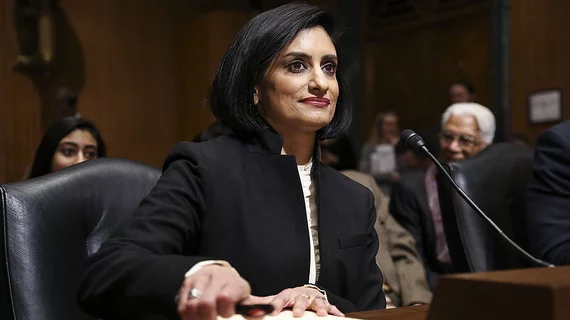CMS proposes to reform Medicaid managed care
CMS proposed regulatory reform of the Medicaid managed care program on Nov. 8, giving states more freedom over network-adequacy standards. CMS stated the reforms would promote flexibility, strengthen accountability and maintain and enhance the program’s integrity.
The 2016 framework, which included a “substantial and comprehensive rewrite” of Medicaid managed care and Children’s Health Insurance Program (CHIP) regulations, had provisions that some states and stakeholders found “unnecessarily prescriptive” and added unnecessary costs and administrative burdens to the Medicaid programs, according to CMS.
The Medicaid managed care program allows states to contract with private healthcare plans to administer Medicaid benefits, and it covered more than two-thirds of all Medicaid beneficiaries in 2016. Comprehensive managed care enrollment reached 54.6 million beneficiaries in 2016.
The program has previously come under fire by the Government Accountability Office for needing greater oversight. Programs were overpaid by millions and had little oversight in member enrollment.
CMS formed a working group with the National Association of Medicaid Directors (NAMD) and state Medicaid directors to develop the new framework.
CMS plans to promote flexibility by removing regulations, including administrative requirements that govern how plans communicate with beneficiaries and allowing more flexibility to set adequacy standards to take into account services like telehealth.
The agency will issue guidance to help states move through the federal rate review process with less documentation. The proposal also maintains the plans to develop a Quality Rating System with changes to let states tailor an alternative QRS to their programs.
“Today’s action fulfills one of my earliest commitments to reset and restore the federal-state relationship, while at the same time modernizing the program to deliver better outcomes for the people we serve,” CMS Administrator Seema Verma said in a statement. “I want to thank the state workgroup and the CMS team for their diligent work in analyzing these complex regulations and coming forward with a commonsense approach to right-size our regulatory oversight and let states focus more on delivering quality health care to their beneficiaries."
The proposal maintains the current regulatory framework for program and fiscal integrity. It also prohibits states from cost shifting risk-sharing mechanisms retroactively to federal taxpayers.
"Targeted improvements to the managed care rule have been a top priority for Medicaid Directors,” Board President of NAMD, Judy Mohr Peterson, said in a statement. “NAMD appreciates the partnership shown by CMS to explore these issues and dialogue with the states, providing an opportunity to share perspectives on how the managed care regulatory framework could be improved. We look forward to reviewing CMS's proposed revisions and submitting formal comments."
CMS is not changing the 15-day length of stay limitation from the 2016 regulations for beneficiaries in an institution for mental disease, which the agency cited as a difficult administrative challenge. CMS is seeking comments on the rule.
See the proposed rule here.

